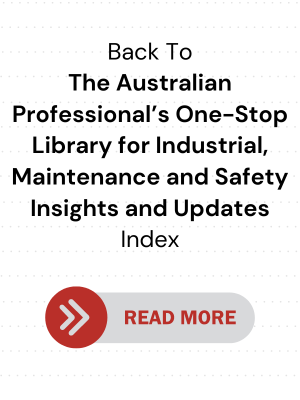Safety Advice When Using Cutting-Off and Grinding Wheels

.png)
(Taken from this post by Flexovit. Republished with permission. Edited for point of view, recency and relevance.)
For your safety, you should ensure that you are fully aware of how to safely use cutting-off and grinding wheels.
The Do’s
Cutting-off and grinding wheels are safe and won’t cause harm when they handled and used correctly.
Keep these things in mind:
- Always handle and store wheels carefully. All cutting and grinding wheels should be placed on top of each other or stored in the original packaging.
- Always visually inspect all wheels before mounting for possible damage in transit.
- Always use a safety guard and ensure that it is correctly positioned and securely fitted. lt should cover at least one half of the wheel and protect the operator in the unlikely event of a wheel breakage.
- Always switch off the power at the supply source and/or remove the plug from the socket before changing the wheel.
- Always use the tools supplied by the machine manufacturer to change the wheel.
- Always ensure that the speed of the machine does not exceed the operating speed marked on the wheel.
- Allow newly mounted wheels to run at operating speed, with the guard in place, for a reasonable time before cutting or grinding.
- Always wear eye protection.
- Always wear appropriate safety clothing such as dust masks, gloves, ear protection, overalls and safety shoes.
- Always secure the workpiece firmly while it is being cut or ground.
- Grind at an angle above 30 degrees to the workpiece with a depressed centre grinding wheel.
- Keep the working area around cutting and grinding operations clear.
The Don’ts
On the other hand, cutting-off and grinding wheels can be dangerous and cause harm when mishandled and misused.
Keep these things in mind:
- Do not store wheels in a damp atmosphere or in extreme temperatures.
- Do not mount a damaged wheel.
- Do not even exceed the maximum operating speed marked on the wheel.
- Do not force a wheel onto a machine spindle.
- Do not tighten the mounting nut or locking flange excessively, as doing so can distort the flanges.
- Do not use a machine which is not in good mechanical condition.
- Do not use a machine without a wheel guard.
- Do not use wheels without proper ventilation or dust protection equipment.
- Do not stop a spinning wheel by applying pressure to the periphery or face. Always switch the machine off and allow the wheel to stop revolving.
- Do not allow the wheel to be trapped or pinched in the cut.
- Do not apply excessive pressure onto the wheel to make the driving motor slow down.
- Do not grind on the side of cutting-off wheels.
- Do not grind with a depressed centre grinding wheel at an angle below 30° to the workpiece.
AIMS' Note on Safe Use of Abrasives
- Inspection: Before using any abrasive disc or wheel, carefully inspect it for cracks, chips or damage. Beware that damaged abrasives can shatter at high speeds and cause serious injury to you or other people nearby. Some brands indicate ‘use by’ dates, which is important because some abrasives deteriorate over time.
- Mounting: Ensure proper and secure mounting of the abrasive onto the tool, using the correct flanges and blotters as needed. Never exceed the maximum RPM rating of the abrasive. Always unplug or disconnect power tools (eg power grinders) before changing abrasives.
- PPE: Always use machine guards designed for the specific abrasive tool. Wear essential safety gear, including safety glasses or goggles or a full-face shield for maximum protection. Gloves, ear protection and dust masks / respirators are often necessary, depending on the material being worked on and the type of abrasive you are using.
- Controlled usage: Start tools smoothly, allowing them to reach full speed before applying them to the workpiece. Avoid excessive pressure that can overheat or break the abrasive. If an abrasive is discolored or smells burnt, replace it.
- Environment: Be mindful of sparks and debris generated by abrasives. Use dust extraction equipment to minimise exposure to harmful dust. Work in a well-ventilated area clear of flammable materials.
- Maintenance: Keep your abrasives clean, sharp and properly maintained. Store them in a safe and organized place when not in use.
- Disposal: Dispose of used abrasives properly according to best practices and local regulations.



.png)